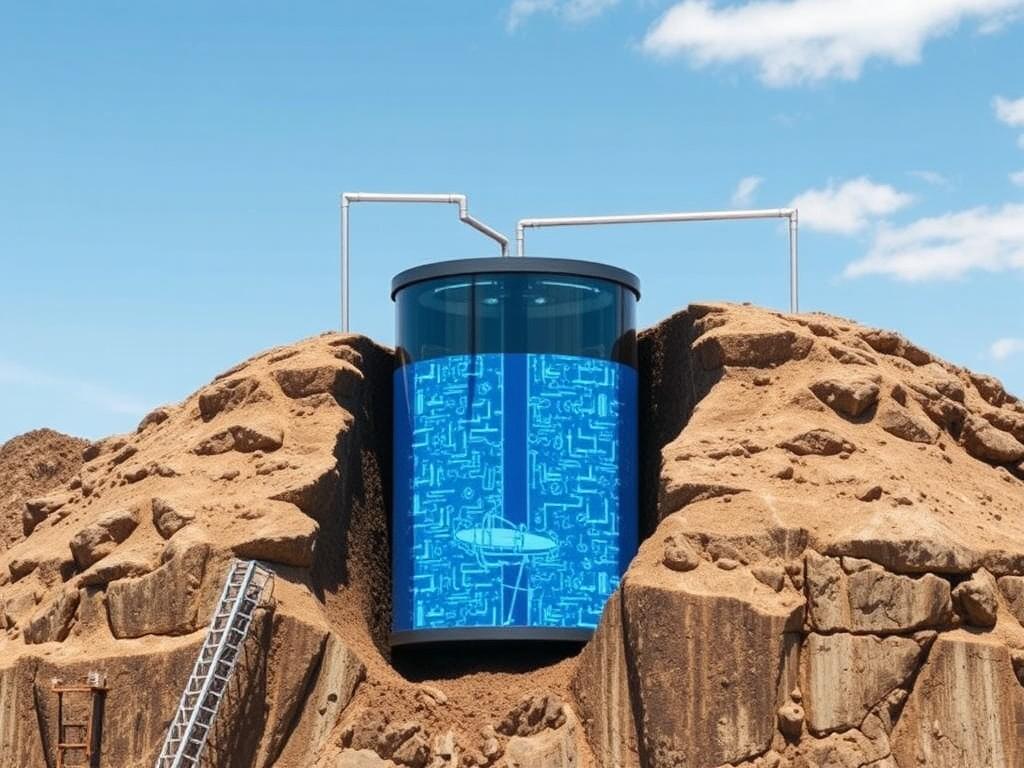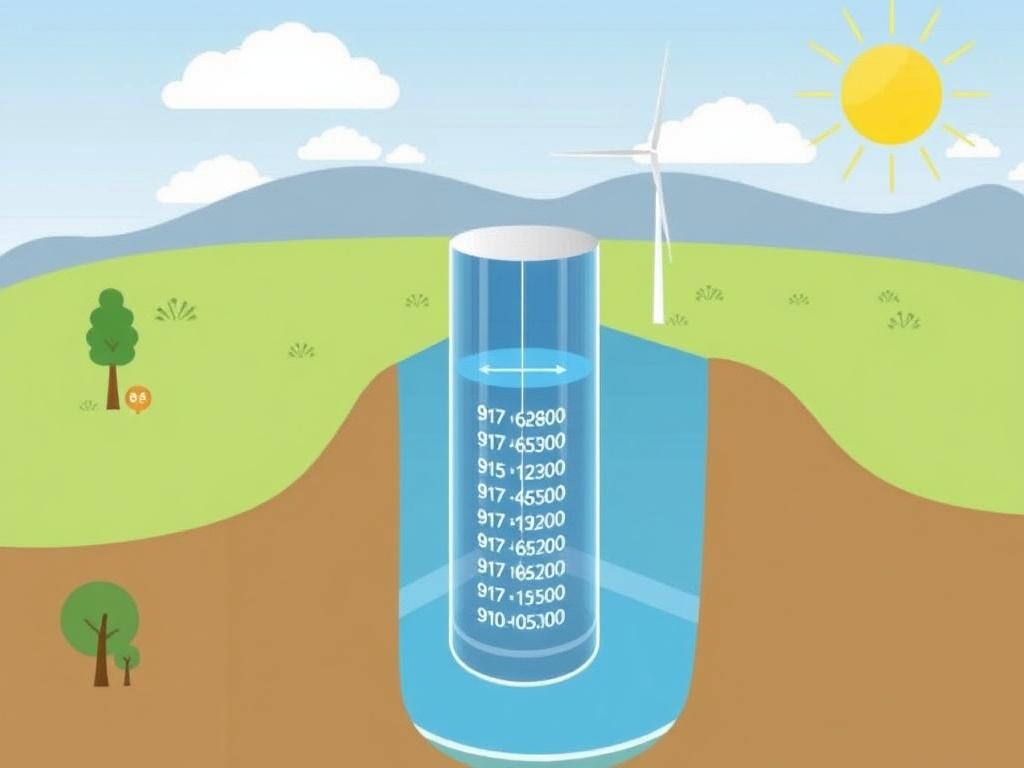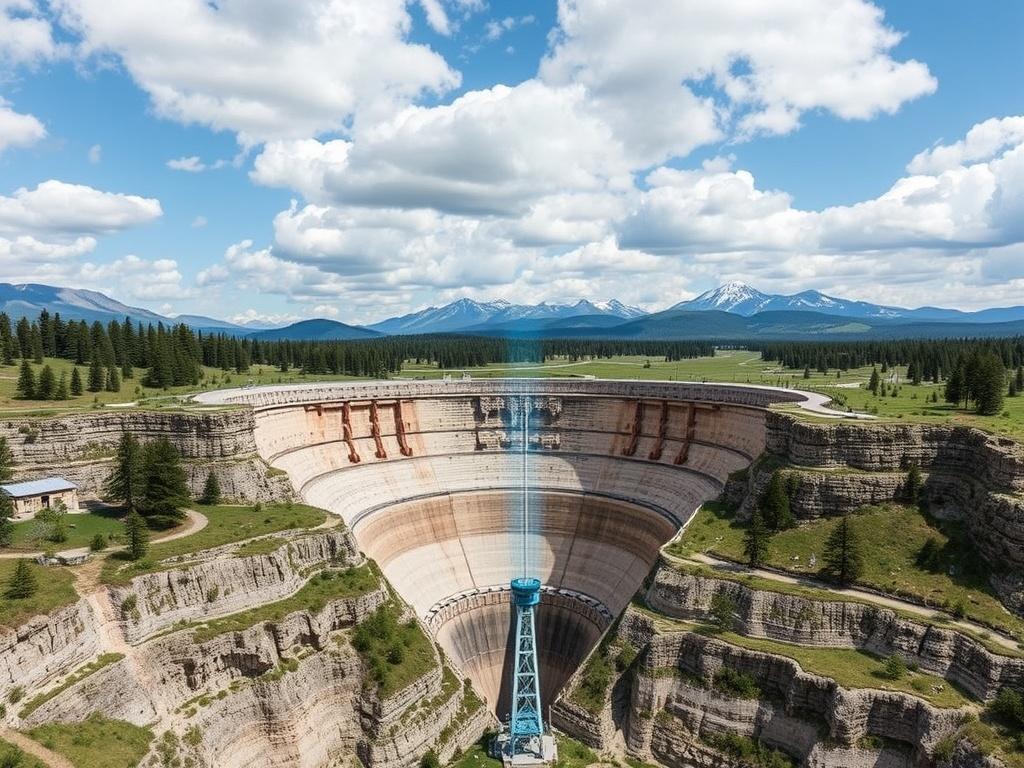- What Is Gravity-Based Energy Storage?
- How Does Gravity-Based Energy Storage Work?
- Types of Gravity-Based Energy Storage Systems
- Advantages of Gravity-Based Energy Storage
- Challenges and Limitations
- Gravity-Based Energy Storage vs Other Storage Technologies
- Innovative Projects and Real-World Applications
- The Future of Gravity-Based Energy Storage
- How Can Individuals and Communities Benefit?
- Steps Toward Adoption and Deployment
- Gravity-Based Energy Storage: Key Takeaways
- Conclusion
In an era where renewable energy sources like wind and solar are becoming increasingly important, one big challenge remains: how to store that energy efficiently for use when the sun isn’t shining or the wind isn’t blowing. This is where gravity-based energy storage systems come in, offering a clever and sustainable solution. But what exactly is gravity-based energy storage, and how does it work? In this article, we’ll take a deep dive into the fascinating world of gravity-based energy storage, explore how it functions, and why it has the potential to change the way we think about energy storage in the future.
What Is Gravity-Based Energy Storage?

At its core, gravity-based energy storage is a method of storing energy by using gravity as the storage medium. Unlike traditional batteries that store chemical energy, gravity-based systems store energy in the form of potential energy, harnessing the natural force of gravity. The basic principle is simple: energy is used to lift a heavy object to a certain height, and when that energy is needed, the object is allowed to descend, converting the potential energy back into electrical energy.
This technology fits perfectly into the landscape of renewable energy because it provides a means of balancing energy supply and demand. When there’s excess electricity (for example, from solar panels during the day), it can be used to lift heavy weights. When demand peaks or renewable supply falls, the weights are lowered to generate electricity, creating a sustainable loop.
How Does Gravity-Based Energy Storage Work?

Understanding how gravity-based energy storage works requires a quick look at energy conversion processes and mechanical engineering. These systems typically involve three main components:
- Heavy Mass: Often a large block of concrete or steel weight designed to store potential energy.
- Height or Elevation: A tall shaft, tower, or hill that provides the vertical distance necessary to generate potential energy.
- Energy Conversion Mechanism: Motors and generators that convert electrical energy into mechanical energy (lifting the weight) and vice versa (generating electricity).
Here’s how the process usually unfolds:
- Charging Phase: When there is surplus electricity available (e.g., during periods of high renewable energy output), electric motors use this energy to lift a heavy object, converting electrical energy into potential energy.
- Energy Storage: The weight is held at an elevated position, essentially “storing” the energy in the form of gravitational potential energy.
- Discharging Phase: When electricity demand exceeds supply, the weight is allowed to fall slowly, driving a generator that converts the potential energy back into electrical energy to supply the grid.
Types of Gravity-Based Energy Storage Systems
There are several variations of gravity-based energy storage systems, each with its unique design and operational details. Some of the most common types include:
| Type | Description | Typical Applications |
|---|---|---|
| Pumped-Storage Hydropower (PSH) | Uses water pumped to a higher reservoir; when electricity is needed, water flows down turbines, generating power. | Large-scale grid energy storage, especially where natural elevation exists. |
| Solid Mass Lifting Systems | Uses cranes or winches to lift heavy concrete blocks or weights in a vertical shaft or tower. | Urban areas or regions lacking suitable hydrological resources. |
| Gravity Batteries with Rail Systems | Heavy masses are lifted and lowered on rails, often on mountainsides or specially constructed slopes. | Renewable energy storage in remote areas. |
Each type leverages the same fundamental principle but adapts it to specific environmental and economic conditions.
Advantages of Gravity-Based Energy Storage
Why are scientists and engineers so interested in gravity-based energy storage? There are several compelling benefits that make it an attractive solution in the race for better energy storage technologies.
- Long Lifespan: Unlike chemical batteries, which degrade over time and require costly replacement, gravity-based systems can last for decades with minimal maintenance.
- Environmental Friendliness: These systems rely on materials like concrete and steel and do not require harmful or scarce chemicals.
- Scalability: Gravity-based systems can be scaled up or down depending on energy storage requirements and site specifics.
- Quick Response Time: The systems can rapidly switch between charging and discharging, making them effective at balancing grid fluctuations.
- Low Energy Losses: While some losses exist in energy conversion, gravity systems typically have high round-trip efficiencies compared to some battery technologies.
With the increasing penetration of intermittent renewable energy sources, having reliable, sustainable, and efficient energy storage is more important than ever. Gravity-based energy storage offers a compelling solution.
Challenges and Limitations
As promising as gravity-based energy storage sounds, it does come with its share of challenges and limitations. Understanding these is key to recognizing where and how this technology can be realistically deployed.
- Site-Specific Requirements: The need for sufficient height or elevation means that not every location is suitable for gravity energy storage. Terrain and geography play a major role.
- Initial Capital Cost: Although maintenance costs are low, the upfront investment in infrastructure such as towers, cranes, or shafts can be significant.
- Energy Density: Gravity-based systems tend to have lower energy density compared to chemical batteries, meaning they can require large physical spaces.
- Mechanical Wear: Despite their long life, moving parts such as motors, cables, or winches require maintenance and can wear out over time.
- Environmental and Community Impact: Constructing large mechanical or concrete structures might face regulatory or public opposition due to environmental concerns or aesthetic reasons.
Despite these challenges, innovative engineering approaches and strategic site selection continue to improve the feasibility and attractiveness of gravity-based energy storage systems.
Gravity-Based Energy Storage vs Other Storage Technologies
Energy storage is a rapidly evolving field, with a variety of options vying for dominance. To appreciate where gravity-based energy storage stands, let’s compare it with some other popular technologies:
| Storage Technology | Energy Density | Lifetime | Environmental Impact | Cost | Best Use Case |
|---|---|---|---|---|---|
| Gravity-Based Energy Storage | Low to Moderate | 40+ years | Low (uses common materials) | Moderate to High upfront, low maintenance | Large-scale, long-duration storage |
| Lithium-Ion Batteries | High | 5-15 years | Moderate (mining impacts, chemical disposal) | Decreasing, but moderate initially | Residential and mobile energy storage |
| Pumped-Storage Hydropower | High | 50+ years | Moderate to High (land submerged, ecosystem impact) | High upfront | Large-scale grid storage |
| Compressed Air Energy Storage | Moderate | 20-30 years | Moderate | Moderate | Grid-level storage |
This comparison highlights that while gravity-based energy storage might not compete with the compactness of batteries, it boasts significant advantages in durability, sustainability, and suitability for large-scale applications.
Innovative Projects and Real-World Applications
Several exciting projects around the world are putting gravity-based energy storage to the test and proving its potential.
- Energy Vault (Switzerland): A company that has developed a gravity battery consisting of massive concrete blocks lifted by cranes within a tower structure. It’s designed to provide cost-effective grid storage using low-tech mechanical parts combined with smart control systems.
- Gravitricity (UK): This project lifts heavy weights inside old mine shafts and uses their gravitational descent to generate energy on demand. It’s an excellent example of reusing existing infrastructure in a sustainable way.
- Pumped Storage Plants Worldwide: While not always considered “gravity” storage in the mechanical sense, these hydropower plants remain the largest and most widely used form of gravity energy storage, powering grids around the globe.
These projects offer a glimpse into a future where gravity-based energy storage plays a crucial role in stabilizing renewable energy supplies and reducing reliance on fossil fuels.
The Future of Gravity-Based Energy Storage

Looking ahead, gravity-based energy storage technology shows immense promise, particularly as the global energy transition accelerates. Industry experts foresee several key trends shaping its future:
- Integration with Renewable Energy: As solar and wind installations expand, gravity storage systems will increasingly become essential in smoothing out energy fluctuations.
- Cost Reductions: Advances in construction techniques, materials, and modular designs will drive down upfront costs.
- Hybrid Systems: Gravity energy storage paired with other technologies like batteries and hydrogen storage could create highly flexible, resilient energy infrastructures.
- Urban Applications: Engineers are exploring smaller-scale gravity storage solutions that can fit into cities and industrial sites, helping to decentralize energy management.
The combination of sustainability, scalability, and long service life makes gravity-based energy storage a crucial contender in the evolving energy storage landscape.
How Can Individuals and Communities Benefit?
While the big picture often focuses on grid-level applications, gravity-based energy storage can also benefit communities and potentially even individual users through localized installations.
Communities located near suitable geological features could deploy systems that provide reliable backup power, reduce electricity costs, and support local renewable generation. Moreover, such projects create jobs and foster innovation within local economies. For individual homeowners, gravity-based systems might seem distant for now, but future miniaturized versions could emerge as viable alternatives to traditional battery packs.
Steps Toward Adoption and Deployment
If you’re interested in championing or understanding gravity-based energy storage in your community or industry, consider these steps:
- Assess Local Geography: Identify sites with the right elevation and available space.
- Collaborate with Energy Experts: Engage engineers and planners familiar with gravity storage technologies.
- Explore Funding Opportunities: Renewable energy grants and incentives often support innovative storage investments.
- Educate Stakeholders: Make sure community members and decision-makers understand the benefits and challenges.
- Pilot Projects: Start small to demonstrate technical and economic feasibility before scaling up.
Gravity-Based Energy Storage: Key Takeaways
Let’s summarize what makes gravity-based energy storage so compelling:
- It stores energy by lifting and lowering heavy masses, turning potential energy into electricity and back again.
- This form of energy storage is highly durable and environmentally friendly compared to chemical batteries.
- It is best suited for large-scale and long-duration storage needs, although innovations are making it more flexible.
- While there are upfront costs and site limitations, advances in technology continue to make it more accessible.
- Projects worldwide show that gravity-based energy storage is not just theoretical but an increasingly practical solution.
Conclusion
Gravity-based energy storage stands as a brilliant example of how we can use simple natural forces to solve complex modern problems. Its ability to provide long-lasting, scalable, and environmentally friendly energy storage makes it a shining star in the quest for sustainable energy solutions. While it may not replace batteries overnight, gravity-based systems have carved out an essential niche—balancing grids, supporting renewable energy integration, and offering a path to a cleaner, more resilient energy future. As we continue to innovate and refine these systems, gravity storage is poised to play a significant role in powering the world sustainably for generations to come.
Как вам статья?







